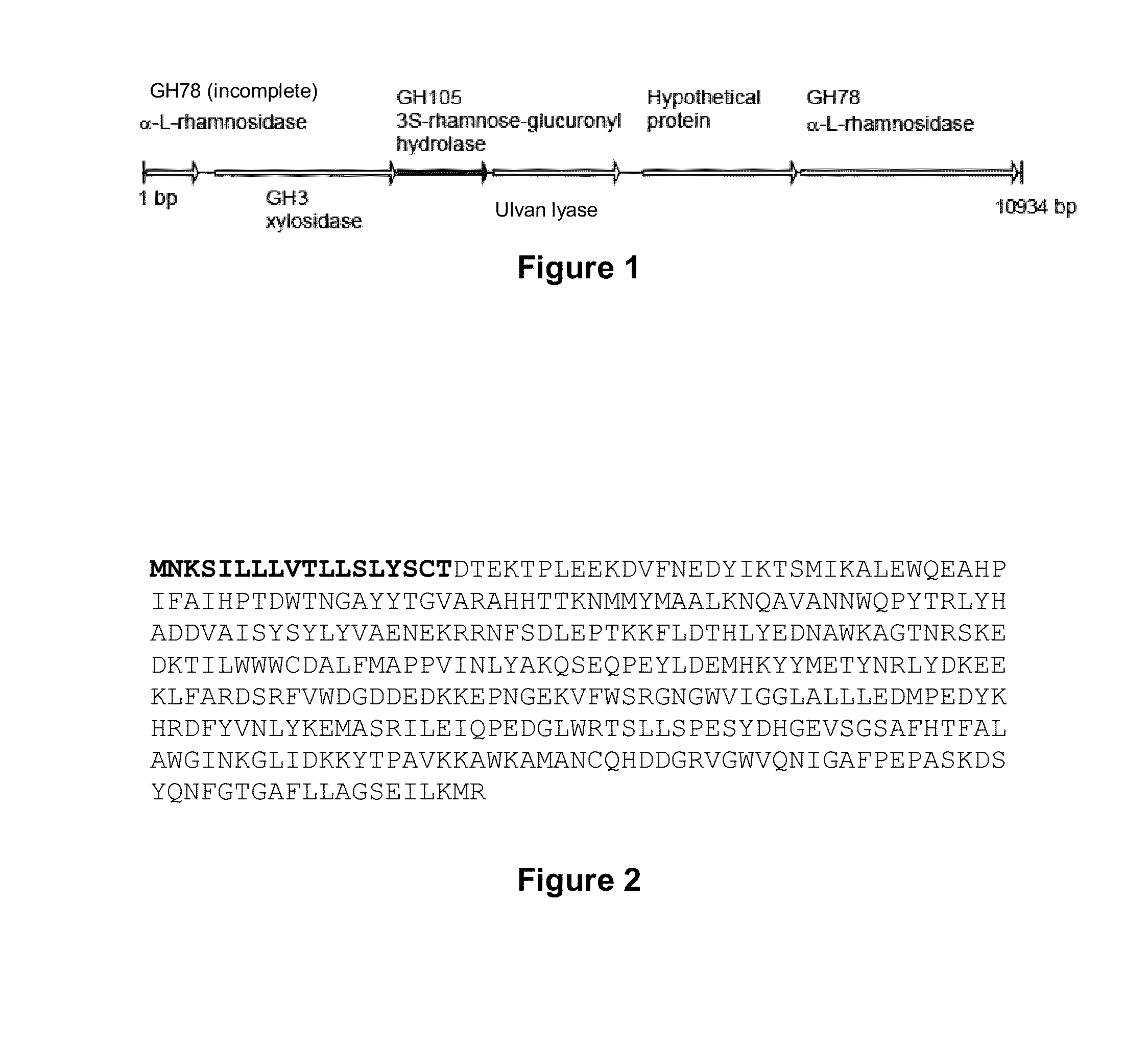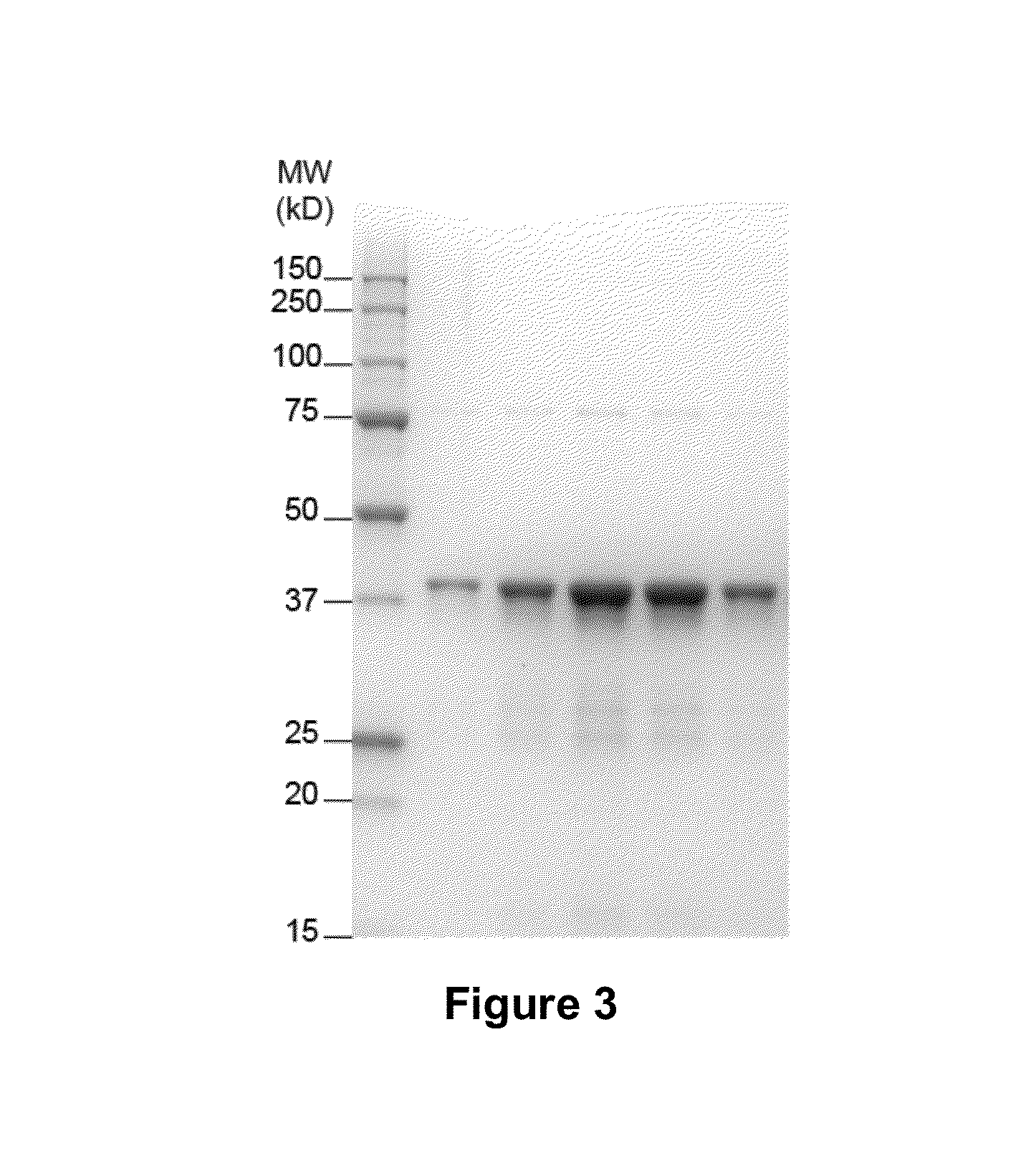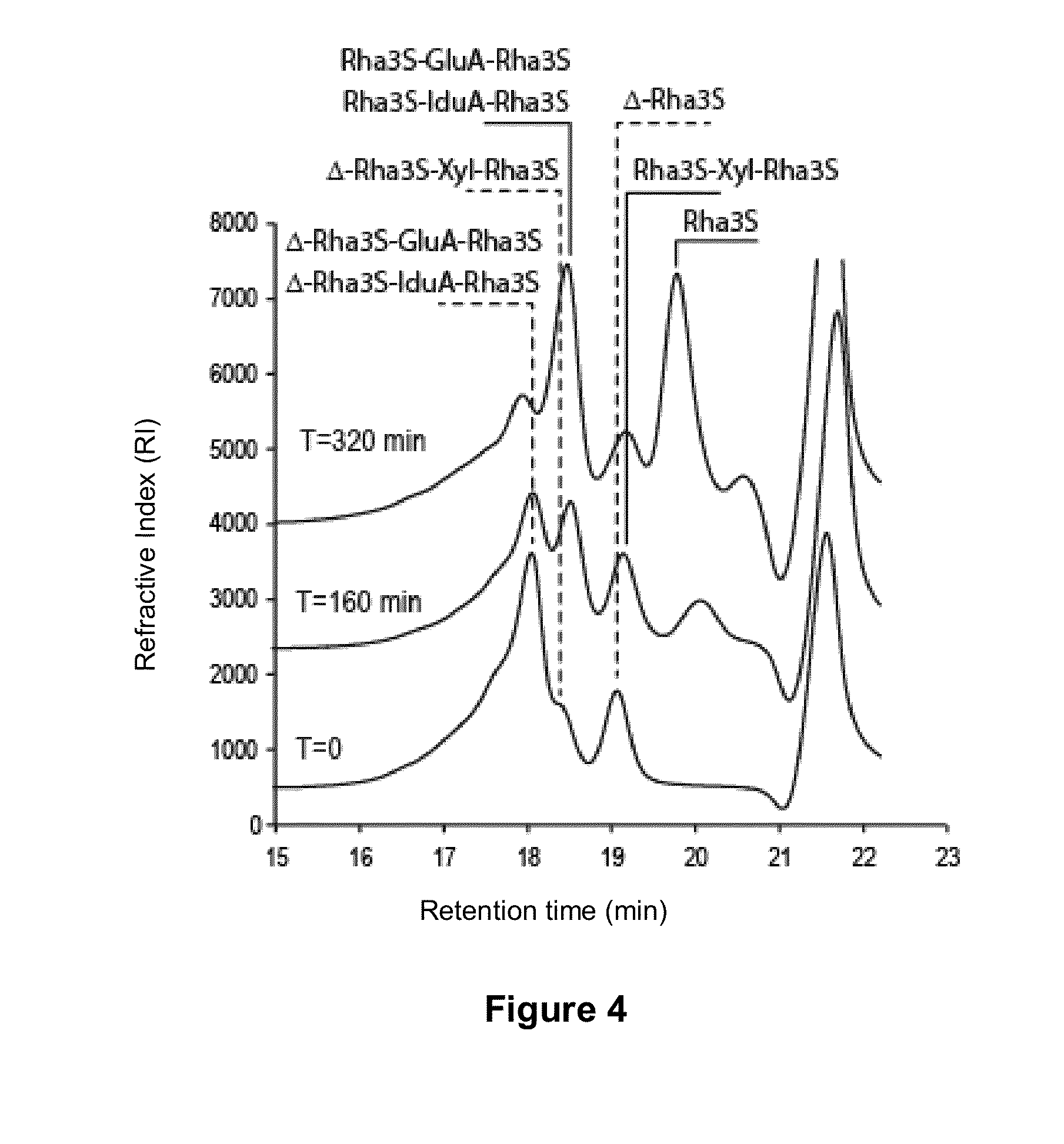3s-rhamnose-glucuronyl hydrolase, method of production and uses
- Summary
- Abstract
- Description
- Claims
- Application Information
AI Technical Summary
Benefits of technology
Problems solved by technology
Method used
Image
Examples
example 1
Identification and Production of the Hydrolase of the Invention
[0053]The genes contiguous to the ulvan lyase gene of the bacterium Persicivirga ulvanivorans called “01-PN-2010”, deposited with the CNCM under number I-4324, were sequenced by the “Tail PCR” method as described in Liu Y G, Mitsukawa N, Oosumi T and Whittier R F (1995) Efficient isolation and mapping of Arabidopsis thaliana T-DNA insert junctions by thermal asymmetric interlaced PCR. Plant J. 8: 457-463 [9].
[0054]A DNA fragment of 10934 base pairs was sequenced, revealing a group of 6 genes, the corresponding proteins of which exhibit homologies with glycoside hydrolase families classified in CAZY (http: / / www.cazy.org / ) and a protein of unknown function.
[0055]The starting point for the sequencing by this method was the ulvan lyase gene. Three primers which pair (sense and antisense) with the known sequence were synthesized. Five different arbitrary primers were chosen from those proposed in the literature (table 1; Liu ...
example 2
Demonstration of the Enzymatic Activity of the Protein of the Invention
[0065]Enzymes described in the literature belonging to the GH105 family are known to cleave the bond between the galacturonyl acid and the neutral rhamnose of the oligosaccharides produced after degradation of rhamnogalacturonan by the rhamnogalacturonan lyases. Galactose is the C4 epimer of glucose, consequently, the formation of the double bond between the C4 and C5 of galactose and of glucose results in a uronic acid having the same chemical structure: galacturonyl acid is synonymous with glucuronyl acid. An oligosaccharide production was carried out by degradation of polygalacturonan at 1 g / l in 100 mM Tris-HCl at pH 7.7, at 30° C., with a rhamnogalacturonan lyase (novozymes) at a final concentration of 0.2 μg / ml. The degradation was followed by an increase in absorbance at 235 nm.
[0066]These oligosaccharides were thus incubated under these same conditions with the protein of the invention at the usual final ...
PUM
| Property | Measurement | Unit |
|---|---|---|
| Nucleic acid sequence | aaaaa | aaaaa |
Abstract
Description
Claims
Application Information
 Login to View More
Login to View More - Generate Ideas
- Intellectual Property
- Life Sciences
- Materials
- Tech Scout
- Unparalleled Data Quality
- Higher Quality Content
- 60% Fewer Hallucinations
Browse by: Latest US Patents, China's latest patents, Technical Efficacy Thesaurus, Application Domain, Technology Topic, Popular Technical Reports.
© 2025 PatSnap. All rights reserved.Legal|Privacy policy|Modern Slavery Act Transparency Statement|Sitemap|About US| Contact US: help@patsnap.com



